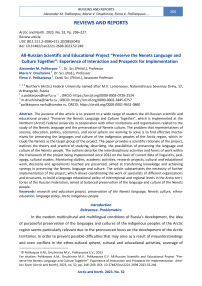All-Russian Scientific and Educational Project “Preserve the Nenets Language and Culture Together”: Experience of Interaction and Prospects for Implementation
Автор: Polikarpov A.M., Druzhinina M.V., Polikarpova E.V.
Журнал: Arctic and North @arctic-and-north
Рубрика: Reviews and reports
Статья в выпуске: 52, 2023 года.
Бесплатный доступ
The purpose of the article is to present to a wide range of readers the All-Russian scientific and educational project “Preserve the Nenets Language and Culture Together”, which is implemented at the Northern (Arctic) Federal University in cooperation with other institutions and organizations related to the study of the Nenets language and the preservation of Nenets culture. The problem that representatives of science, education, politics, economics, and social sphere are working to solve is to find effective mechanisms for preserving the languages and culture of the indigenous peoples of the Arctic region, which include the Nenets as the target group of the project. The paper provides a scientific rationale of the project, outlines the theory and practice of studying, describing, the possibilities of preserving the language and culture of the Nenets people. The authors describe the interdisciplinary activities and forms of work within the framework of the project being implemented since 2022 on the basis of current data of linguistics, pedagogy, cultural studies. Monitoring studies, academic activities, research projects, cultural and educational work, decisions and agreements reached are presented, aimed at transferring knowledge and achieving synergy in preserving the Nenets language and culture. The article substantiates the necessity of further implementation of the project, which allows coordinating the work of specialists of different organizations and structures, to build a language educational policy of interregional and regional levels in the Arctic territories of the Russian Federation, aimed at balanced preservation of the language and culture of the Nenets people.
Research and education project, preservation of the Nenets language, Nenets culture, ethno-education, language policy, Arctic indigenous people
Короткий адрес: https://sciup.org/148329484
IDR: 148329484 | УДК: [811.511.2+008(=511.2)](985)(045) | DOI: 10.37482/issn2221-2698.2023.52.246
Текст научной статьи All-Russian Scientific and Educational Project “Preserve the Nenets Language and Culture Together”: Experience of Interaction and Prospects for Implementation
Introduction Relevance. Problematics
In the modern multicultural and multilingual conditions of Russia’s development, the idea of purposeful preservation of the languages and cultures of the indigenous peoples of the Arctic region seems particularly relevant due to the pronounced focus on the development of the Arctic territories. In order to prevent possible difficulties that may arise as a result of misunderstandings and even conflicts in the ethno-cultural sphere, cultural and educational activities, coverage of events and measures related to the preservation of indigenous languages in the information space of the northern regions, as well as high professional level of specialists engaged in scientific research aimed at studying the state of the languages of the indigenous peoples of the Arctic, ethnoeducation and language policy are necessary. Due to the challenges of our time, the problem of preserving the Nenets language and culture of the Nenets people is becoming increasingly urgent.
In the regions of Russia with a compact Nenets population, there is a lack of motivation among children, youth and their parents to study and preserve their native language; there is a certain disappointment among representatives of the Nenets ethnic group in the prospects of employment with the Nenets language, the possibilities of practical application of their native language in everyday life are seen to be very limited. The gradual disappearance of the real ethnocultural environment in the places of residence of the Nenets people is recorded, there is a desire to leave their small homeland and go to large cities for the purpose of career growth. It should also be noted that there is no unified strategy, coordinated action and decision-making on the part of the various organizations which, by their functional responsibilities, are called upon to be active in the development and implementation of language, educational, social, economic and cultural policy.
Projects and programs aimed at preserving inter-ethnic and inter-confessional harmony in the Arctic region, such as the scientific and educational project “Preserve the Nenets language and culture together”, acquire special significance within the framework of the International Decade of Indigenous Languages, declared by the UN General Assembly. At the 74th session of the United Nations General Assembly, which took place on November 6, 2019, ten years, starting from 2022, were declared the International UN Decade of Indigenous Languages. This decision is enshrined in the relevant final UN document. The resolution on the rights of the indigenous peoples states that a large number of languages, especially indigenous ones, are in danger of extinction. Therefore, there is an “urgent need for the preservation, popularization and revival” of these languages 1. In connection with this decision, UN member states are recommended to take measures to preserve languages and develop national mechanisms for their implementation while allocating appropriate funding for activities carried out within the framework of the International Decade for Indigenous Languages.
In the Russian Federation, particular attention has recently been paid to the preservation and development of small indigenous languages, including those of the Arctic, Siberia and the Far East. A number of measures have been taken to revitalize minority indigenous languages. Nowadays, the designation of the ethnic group “Nenets” has been added to the “List of Indigenous Mi- nority Peoples of the North, Siberia and the Far East of the Russian Federation”, approved by the Government of the Russian Federation, which covers a total of 40 peoples 2.
The aim of the project presented in this article is to preserve the language and culture of the Nenets people. The main objectives of the project include:
-
• interaction with government departments of the Nenets and Yamalo-Nenets Autonomous okrugs, ethno-cultural, scientific centers and education development centers of the regions with compact Nenets population;
-
• conducting monitoring studies to identify the state of the Nenets language and the preservation of the culture of the Nenets people in the Nenets Autonomous Okrug, Yamalo-Nenets Autonomous Okrug and other regions with a compact Nenets population;
-
• presentation of research results in the field of the Nenets language and culture at scientific events at the international, all-Russian, interregional and regional levels; publication of materials on the preservation and development of the Nenets language on social networks and on the websites of scientific and educational organizations;
-
• conducting the Federal Olympiad for schoolchildren in the native languages and literature of the peoples of Russia (Nenets language); preparation and implementation of a professional retraining program “Teaching the Nenets language and the culture of the Nenets people in the context of digitalization” for Nenets language teachers and cultural workers, etc.
The project co-directors are A.M. Polikarpov, Doctor of Philology, Professor, Head of the Department of Translation and Applied Linguistics of NArFU, Director of the Scientific and Educational Center “Integrative Translation Studies of the Subarctic Space” and M.V. Druzhinina, Doctor of Pedagogical Sciences, Professor, Professor of the Department of Translation and Applied Linguistics of NArFU.
The implementers and participants of the project are teachers and staff of the Department of Translation and Applied Linguistics and the Scientific and Educational Center “Integrative Translation Studies of the Subarctic Space” of the Higher School of Social Sciences, Humanities and International Communication, students, graduate students of Northern (Arctic) Federal University, leading specialists of educational and scientific organizations, ethno-cultural centers of Naryan-Mar, Salekhard, as well as scientists from Moscow and St. Petersburg.
The project implementation period covers the period from March 2022 to December 2026. The main stages of the project include: design and preparatory; monitoring; analytical and research stage; scientific and educational stage; publication and presentation; final.
Scientific substantiation of the project
According to the 2021 census, there are more than 49.6 thousand Nenets in the Russian Federation 3. The Nenets language, as a language of indigenous small people, belongs to the northern group of the Samoyed branch of the Uralic language family. Sometimes it is included in a larger language family called Ural-Yukaghir [1, Burkova S.I.]. It should be noted that the first detailed description of the “Samoyeds with the inclusion of the Yuracs” in line with ethnographically oriented research was carried out by the Russian geographer and traveler A.F. Middendorf based on the results of his expedition to Northern and Eastern Siberia in 1842–1845. Half a century later, Finnish ethnographer and folklorist T. Lehtisalo tracked the traditional culture of the tundra and forest Nenets in expeditions of 1911 and 1914. In his studies, he called representatives of the Nenets people Yurako-Samoyeds [2, Lehtisalo T.].
The tundra dialect of the Nenets language is not uniform, but is represented by dialects and even so-called sub-dialects. The dialects of the Nenets language are divided into two main groups: western and eastern. Western dialects include Kaninskiy, Timanskiy, Kolguevskiy and Ma-lozemelskiy. Eastern dialects are the Uralskiy, Yamalskiy, Gydanskiy (Yuratskiy), Nadymskiy, Tazov-skiy dialects [4, Koshkareva N.B., p. 11]. Researchers point out that these dialects are very heterogeneous. The Taimyrskiy (Yeniseyskiy) dialect, being the easternmost dialect in the continuum of the tundra Nenets language, has a number of significant features that distinguish it not only from western and central dialects, but also from other eastern ones, which is often noted by the speakers themselves. In the Yamalskiy version of tundra Nenets one can distinguish, for example: Yar-salinskiy, Panaevskiy, Novoportovskiy, Yaptiksalinskiy, Seyakhinskiy, Tambeyskiy and some other dialects. The Gydanskiy dialect of the Nenets language is considered one of the sub-dialects of the Tazovskiy dialect, along with the Antipayutinskiy dialect [5, Serotetto G.P., p. 498]. The Tambeyskiy dialect of the tundra dialect of the Nenets language is spoken by a group of Nenets living compactly on the extreme northern coast of the Yamal Peninsula [6, Laptander R.I., pp. 423–428].
An intermediate position between the western and eastern dialects is occupied by the Bol-shezemelskiy dialect, which is used in everyday oral communication of representatives of the eastern part of the Nenets Autonomous Okrug. It was taken as the basis for the creation of Nenets writing language. Some scientists believe that the presented division of Nenets dialects is very conventional, since “modern Samoyedology does not have reliable comprehensive information about their features” [7, Koshkareva N.B., pp. 131–132].
It should be further stated that the situation with the Nenets language is not distinguished by the homogeneity of its vitality. In the Yamalo-Nenets Autonomous Okrug, the language situation with the tundra Nenets language is relatively stable, since this is facilitated by the remoteness of the territories where the Tundra Nenets live from large populated areas, their traditional meth- ods of economy and nomadic way of life. It is also important that “language transmission from parents to children is observed there, and it is not uncommon for a child to come to school without knowing Russian” [4, Koshkareva N.B., p. 12], especially among the Nenets of the Tazovskiy and Yamalskiy districts, which cannot be said about the representatives of the Nenets people of the Priuralskiy, Purovskiy and Nadymskiy districts” [ibid., p. 14]. In the Nenets Autonomous Okrug, the situation with the preservation of the Nenets language cannot be considered favorable, although much has been done recently in the direction of revitalizing the language.
Forest Nenets, who use the forest Nenets dialect in their communication, live mainly in the south of the Yamalo-Nenets Autonomous Okrug, in the basins of the Pur and Taz rivers. Representatives of the forest Nenets also live on the territory of the Khanty-Mansi Autonomous Okrug (Ugra). Their number today is small and does not exceed 2 thousand people. At the same time, no more than 800 native speakers actively use the Nenets language as their native language. Unlike the tundra Nenets, reindeer herding does not play a dominant role in the life of the forest Nenets: hunting and fishing are in the foreground. The forest dialect of the Nenets language is often considered by the forest Nenets themselves to be an independent language, called Neshanskiy by its speakers. An interesting fact in this regard is that in the 1990s, the forest dialect of the Nenets language received writing on the basis of the Purovskiy dialect [ibid., p. 14].
It should be noted that the forest dialect of the Nenets language is also not homogeneous; it has separate dialects (Purovskiy, Aganskiy and Numtovskiy), which are characterized by a number of distinctive features [8, Koshkareva N.B., pp. 15–37]. The Purovskiy dialect is spoken by about half of the forest Nenets, mainly living in the Purovskiy district of the Yamalo-Nenets Autonomous Okrug [4, Koshkareva N.B., p. 14], which explains its name.
Oral communication in the Nenets language in general is mainly limited to intra-family communication, as well as reindeer herding, fishing, hunting and traditional folk crafts. Oral folklore is also an important aspect of the functioning of the Nenets language. An indisputable fact is the preservation of the oral tradition of storytelling among the tundra Nenets, both in remote camps of the Nenets Autonomous Okrug and in a number of territories of the Yamalo-Nenets Autonomous Okrug. At the same time, “only a few representatives of the older generation” have the ability to reproduce folklore and continue folk traditions [4, Koshkareva N.B., pp. 11–14].
The need to implement a project to preserve the Nenets language and culture is explained primarily by the fact that, in terms of its social and functional indicators, the Nenets language today is one of the languages with a low level of vitality, although it is one of the largest in terms of the number of speakers among other indigenous languages of our country. It is worth mentioning that the UNESCO Atlas of the World's Endangered Languages defines tundra Nenets as “definitely endangered” and forest Nenets as “severely endangered” 4. The two above-mentioned varieties of the Nenets language, considered dialects [1, Burkova S.I.] in Russia, differ significantly from each other, which allows some scientists to consider them as separate languages [3, Lyublinskaya M.D., Pushkareva M.V., pp. 5–32].
Despite some obvious dialectological differences, primarily related to phonetics, the vocabulary of the Nenets language as a whole can be considered rather uniform. But this does not exclude the fact that dialects and colloquialisms contain specific vocabulary, which can be explained by the predominance of one or another type of economic activity in different areas of compact residence of the Nenets people, which in turn is explained by dependence on natural conditions [9, Amelina M.K., p. 7].
The study of the state of the Nenets language in regions of compact residence of the Nenets people is of paramount importance for the implementation of the presented scientific and educational project. It started with the monitoring carried out in September-October 2022 in the Nenets Autonomous Okrug.
Monitoring research during the expedition to the Nenets Autonomous Okrug
The expedition to the Nenets Autonomous Okrug was carried out within the framework of the described project in the period from September 26 to October 2, 2022 by a group of scientists from the Department of Translation and Applied Linguistics of the Higher School of Social Sciences, Humanities and International Communication of NArFU, consisting of Doctor of Philology, Professor A.M. Polikarpov, Doctor of Pedagogical Sciences, Professor M.V. Druzhinina, Candidate of philological sciences, Associate professor E.V. Polikarpova, and graduate student of the Department of Translation and Applied Linguistics of NArFU O.E. Latysheva. The geography of the expedition’s locations in the Nenets Autonomous Okrug was quite extensive: the city of Naryan-Mar; Krasnoe village (Bolshezemelskaya tundra); Andeg village; Nelmin Nos village (Malozemelskaya tundra). The components of the monitoring studies were correlated with the purpose and objectives of the project; they included immersion in the linguistic and cultural environment of the region; studying the educational environment of the Nenets Autonomous Okrug in order to monitor the state of the language and culture of the Nenets people; acquaintance with the history of the Nenets language and the culture; communication with teachers, students, kindergarten teachers and preschool children, residents, creative people; survey of teachers and schoolchildren, survey of interested parties, interviews with specialists, etc.
The organizers and authors of the project thought out in advance a register of organizations and teams of the Nenets Autonomous Okrug, which were the target group for monitoring research. The main ones are the Department of Education, Culture and Sports of the Nenets Autonomous Okrug, the Nenets Regional Center for Educational Development of the Nenets Autonomous Okrug, the Ethno-cultural Center of the Nenets Autonomous Okrug (Naryan Mar) and its branch in the village of Nelmin Nos, a branch of Northern Federal University in Naryan-Mar, 5 schools, 2 kindergartens, 2 boarding schools, tourist center “Arctic”, community center “Arctic”, 4 rural houses of culture, 3 museums, 5 creative groups, including the People’s theater.
The purpose of the research work, which was carried out in the Nenets Autonomous Okrug, was to find mechanisms for the preservation and development of the language and culture of the Nenets people. The main tasks that were solved during the work within a week-long stay (09/26/2022-10/02/2022) in the Nenets Autonomous Okrug were:
-
• preparation for the II Federal Olympiad of schoolchildren in the native languages and literature of the Russian Federation, and more precisely in the language and literature of the Nenets;
-
• preparation of a professional retraining program “Teaching the Nenets language and culture of the Nenets people in the context of digitalization”, which is planned to be launched in the 2023–2024 academic year;
-
• monitoring studies of the state of the Nenets language and the teaching of the Nenets language in the system of preschool, school and additional education, as well as studying the situation of preserving and developing the culture of the Nenets people in the Nenets Autonomous Okrug.
O.E. Latysheva, a Nenets language speaker, a post-graduate student of the Department of Education, Culture and Sports of the Nenets Autonomous Okrug, the Deputy Director of the Ethno-Cultural Centre of the NAO, and a graduate student of the Department of Translation and Applied Linguistics of the Higher School of Education, Culture and Sports of the Nenets Autonomous Okrug, was appointed to supervise the program for NArFU scientists. She successfully managed to organize meetings with representatives of numerous educational organizations and cultural institutions in the city of Naryan-Mar, as well as accompanying during trips to remote towns and villages of the Nenets Autonomous Okrug. Scientists from the Department of Translation and Applied Linguistics of NArFU visited more than twenty organizations, institutions and centers of the Nenets Autonomous Okrug. The researchers communicated with representatives of regional authorities, management of educational organizations, local residents, creative groups, preschool and school-age children. The scientists immersed themselves in the linguistic and cultural environment of the Nenets people and were impressed by the nature of the Nenets Autonomous Okrug, history, culture, art of the Nenets people, their traditions and customs. The researchers from NArFU were most impressed by the residents of the Nenets Autonomous Okrug, especially children. Representatives of the Nenets people are very creative and talented people, who write poems and songs, create unique works of art, dance and sing, preserving a culture that is surprisingly in harmony with nature. Nenets children love to draw, sculpt, and create beautiful crafts from natural materials. The main features of the Nenets people are taciturnity, hard work, modesty, patience, calmness, love for neighbors and children, and preservation of family ties. Representatives of the Nenets people form a single harmony with nature and are characterized by the desire to preserve their culture.
More than 100 representatives of the Nenets people took part in the monitoring study. The results of the research, educational, information and monitoring activities of the NArFU research group were summed up at a meeting with the participation of the senator from the Nenets Autonomous Okrug in the Federation Council R.F. Galushina together with representatives of the Department of Education, Culture and Sports of the Nenets Autonomous Okrug, as well as employees of the Center for Educational Development of the Nenets Autonomous Okrug and other interested parties.
The main results of the trip to the Nenets Autonomous Okrug:
-
• carrying out a detailed analysis of the situation with teaching the Nenets language, preserving the culture of the Nenets people and discussing mechanisms for improving the situation;
-
• description of the problems of kindergartens and identification of opportunities to assist preschool organizations in learning the language and culture of the Nenets people;
-
• development of proposals for intensifying and diversifying forms of work with parents in order to improve the language situation;
-
• consideration of the mechanism for providing benefits for representatives of the Nenets people in the process of their participation in the Federal Olympiad, professional retraining, vocal and dance groups, skill competitions, etc.;
-
• presentation of the primary results of the monitoring study in the Nenets Autonomous Okrug. Senator Rimma Fedorovna Galushina highly appreciated the results of the work of the NArFU research group and noted current problems that require solutions by authorities at the federal level. When summing up the results, a fruitful exchange of views took place and a strategy for further action was outlined 5.
During the expedition, numerous meetings between expedition participants and repre- sentatives of organizations and institutions in the Nenets Autonomous Okrug took place, which is reflected in the photos below 6.

Fig. 1. Visit to the Ethno-cultural Center of the Nenets Autonomous Okrug, September 26, 2022.
Fig. 2. Nenets language class at the school of the Ethnocultural Center of the Nenets Autonomous Okrug.
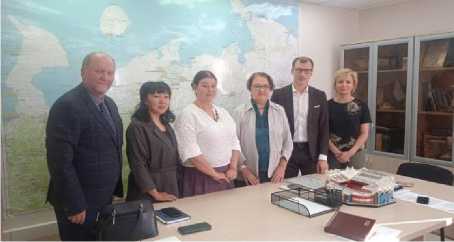
Fig. 3. Meeting at the Department of Education, Culture and Sports of the Nenets Autonomous Okrug, September 27, 2022.
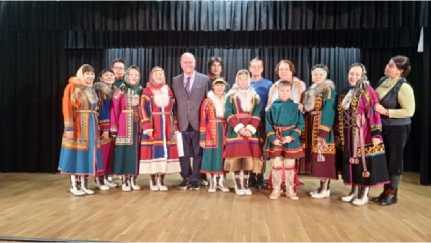
Fig. 4. Meeting with artists of the Nenets amateur theater “Ilebts” (Naryan-Mar).

Fig. 5. Attending a Nenets language class in a kindergarten in the Krasnoe village.
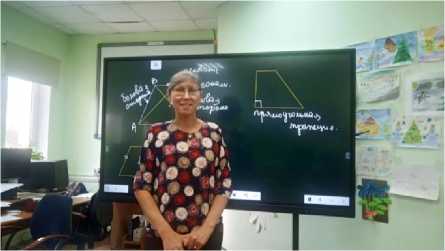
Fig. 7. Visit to a school in the Andeg village.
Fig. 6. Visit to a boarding school in the Krasnoe village.
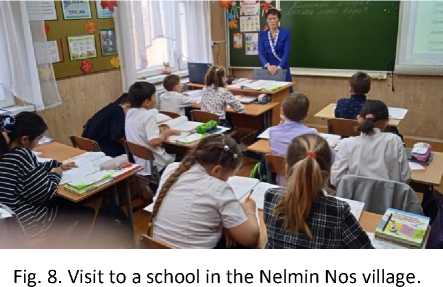
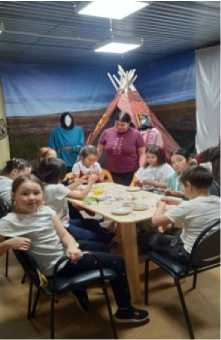
Fig. 9. Visit to the branch of the State Budgetary Institution “Ethnocultural Center of the Nenets Autonomous Okrug”, Nelmin Nos village.
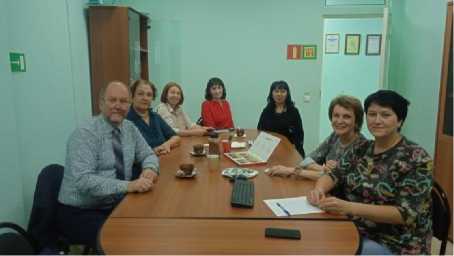
Fig. 10. Summing up the results of the expedition at the Education Development Center of the Nenets Autonomous
Okrug with the Senator of the Russian Federation Galushina R.F.
The results of monitoring studies carried out in the Nenets Autonomous Okrug are presented in scientific reports by members of the NArFU research group at the interregional scientific and practical conference “Civilization — North: languages and cultures of indigenous peoples of the North” (Salekhard, October 30-November 2, 2022).
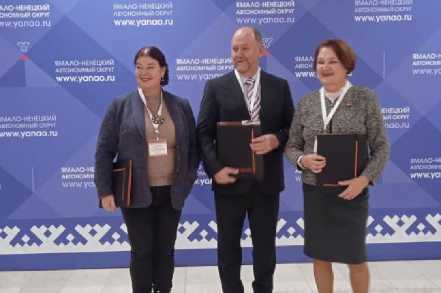
Fig. 11. At the conference in Salekhard.
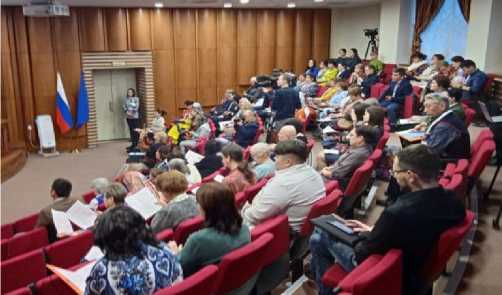
Fig. 12. Participants of the conference in Salekhard “Civilization — North: languages and cultures of indigenous peoples of the North” (Salekhard, October 30-November 2, 2022).
Key activities of the project
The official presentation of the scientific and educational project to the Russian public in March 2022 was preceded by cooperation with the Ethno-cultural center of the Nenets Autonomous Okrug, participation in the work of the Union of Translators of Russia and the activities of its Council on translation using the languages of the peoples of Russia, the study by project participants of the phenomena of multiculturalism and multilingualism in the world, their participation in the work of expert communities, commissions and associations for the analysis of educational programs, manuals, textbooks, scientific and methodological products and scientific works, including monographs, dissertations and theses.
The official presentation of the project took place in March 2022 at the international seminar on the preservation and popularization of the languages of indigenous peoples of the Arctic (St. Petersburg, Russian State Pedagogical University, March 16–18, 2022). The seminar was attended by Doctor of Philology, Professor, Head of the Department of Translation and Applied Linguistics A.M. Polikarpov and Deputy Director of the Ethno-cultural Center of the NAO O.E. Latysheva. The international seminar on the preservation and popularization of the languages of indigenous peoples of the Arctic was included in the plan of main events of the Russian Federation’s chairmanship of the Arctic Council in 2021–2023, and was also included in the plan of events of the International Decade of Indigenous Languages, announced by the UN General Assembly. The seminar was attended by representatives of nine constituent entities of the Russian Federation: teachers, university professors, IT project developers, librarians, language activists, representatives of public organizations and movements, including youth, as well as representatives of federal executive authorities and executive authorities of constituent entities of the Russian Federation.
At the first session, which was entitled “Digitalization of the languages of indigenous peoples of the Arctic,” A.M. Polikarpov presented the scientific and educational project of NArFU, as well as the professional retraining program “Teaching the Nenets language and Nenets culture in the context of digitalization”. The presented report caused a great resonance among those present. Postgraduate student of the Department of Translation and Applied Linguistics Olga Latysheva, who writes PhD thesis on the topic “Ethnocultural aspects of translating Nenets folklore into Russian” (scientific advisor is A.M. Polikarpov), presented two reports at the seminar. As a graduate student, she spoke at the section “Publishing literature in the languages of indigenous peoples of the Arctic: current state and prospects” with a report on the topic “From the experience of translating Nenets folklore texts into Russian (based on a complex expedition to the Kanin Nenets)”. Olga Latysheva comes from the Kanin tundra, so her interest in the folklore of these particular places is not accidental. As deputy director of the Ethno-cultural Center of the Nenets Autonomous Okrug (Naryan-Mar), Olga Latysheva presented a report on the preservation of the Nenets language through the editorial and publishing activities of the State Budgetary Institution of Culture “Ethnocultural center of the Nenets Autonomous Okrug” at the third session entitled “Promotion of the languages of indigenous minorities of the Arctic in the public and information space”.
Cooperation between the Ethno-cultural Center of the Nenets Autonomous Okrug and Northern (Arctic) Federal University in the field of education, translation activities, culture and in-tercultural communication is currently carried out on the basis of an Agreement signed between these organizations.
It should be noted that representatives of the Northern (Arctic) Federal University named after M.V. Lomonosov actively participate in many events held by state bodies of executive and legislative power at the federal level in connection with the preservation and development of the languages of the peoples of Russia. On December 16, 2021, A.M. Polikarpov took part in the 5th Forum “Language policy in the Russian Federation”, which was held by the Federal Agency for Nationalities of the Russian Federation. He made a report at the forum on the topic “Translation activities using the languages of the peoples of Russia: regional interaction”. On February 8, 2022, A.M. Polikarpov took part in a round table held by Federal Agency for Ethnic Affairs entitled “Program for the preservation of Russian languages: development and implementation”, participating in a discussion about translation as an important tool for preserving the languages of the peoples of Russia. Since March 2022, A.M. Polikarpov is a member of the Working Group on legislative support for the ethno-cultural development of the peoples of Russia and improving the language policy of the Committee on Nationalities Affairs of the State Duma of the Russian Federation and takes an active part in the meetings of the Working Group.
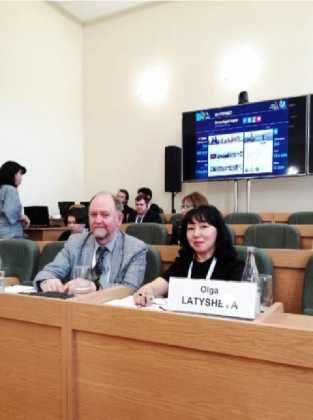
Fig. 13. At the international seminar in St. Petersburg (RSPU, March 16–18, 2022).
All-Russian round table “Translation activities using the languages of the peoples of Russia: the Nenets language”
The All-Russian round table “Translation Activities Using the Languages of the Peoples of Russia: The Nenets Language” was held on June 14, 2022. The initiators were the Department of Translation and Applied Linguistics of Northern Federal University, the State Budgetary Institution “Ethno-cultural Center of the Nenets Autonomous Okrug” and the Union of Translators of Russia. The main topic of the round table was devoted to the issues of preserving the Nenets language through translation in the context of the development of Nenets culture. More than 40 people from different regions of Russia took part in the round table meeting. Among the event participants were representatives of government bodies at the federal and regional levels, members of public organizations and associations, representatives of science, education and culture interested in the preservation and development of the Nenets language and other native languages of Russia, practicing translators, translation teachers at Russian universities, members of the Union of Translators Russia and other interested parties from Moscow, St. Petersburg, the Nenets Autonomous Okrug, the Yamalo-Nenets Okrug, the Taimyr Dolgano-Nenets District of the Krasnoyarsk Krai, the Komi Republic, the Arkhangelsk and Murmansk oblasts, as well as other regions of Russia. Director of the SBI “Ethno-cultural Center of the Nenets Autonomous Okrug” E.I. Vergunova, Rector of NArFU E.V. Kudryashova, President of the Union of Translators of Russia O.Yu. Ivanova, VicePresident of the Association of Indigenous Peoples of the North, Siberia and the Far East of the Russian Federation on issues of education, native languages and project activities N.G. Veisalova, as well as a member of the Federation Council Committee on Science, Education and Culture, Senator R.F. Galushina addressed the participants of the round table with a welcoming speech. Rector of NArFU E.V. Kudryashova drew the attention of the round table participants to the importance of studying and preserving the languages of the indigenous peoples of the Arctic, including Nenets, in our time, when the country is faced with the task of preserving multilingualism and uniting the peoples of Russia in order to strengthen statehood. The rector pointed out the promise of research related to the culture and education of our closest neighbors.
The round table participants discussed the historical role and current state of the Nenets language, its place in the education system and culture of the Nenets, the scope and directions of translation activities using the Nenets language, specific steps to develop translation using the Nenets language, problems of its preservation and prospects for the revival, methodology teaching Nenets as a native language in preschool and general education organizations and many other issues. A.M. Polikarpov named in his speech on the topic “Translation as a tool for the preservation and development of the Nenets language” facts that are significant for the development of the written language of the Nenets language. For example, it was mentioned that in the 1820s, “enlightener of the Samoyeds” Archimandrite Veniamin invented the letters of the Samoyed (Nenets) alphabet, compiled a Russian-Samoyed dictionary and translated almost all the books of the New Testament into the Samoyed language. According to A.M. Polikarpov, important events in the development of writing are also the fact that in 1856 priest Joseph Korelin wrote a brief grammar of the Nenets language, and Petr Zuev, a priest of Bolshezemelskiy parish, was engaged in translations and proofreading of Bible translations into Nenets. In total, 15 people made presentations at the All-Russian round table within the framework of the compiled program. These were scientific presentations in the form of impulse messages, which aroused keen interest of all participants in the issues covered and were accompanied by discussions, as is customary at round tables. O.E. Latysheva in her report focused on some aspects of documenting Nenets folklore texts for the purpose of translating them into Russian. Many speakers in their reports noted that the main factors in translation activities, including from the Nenets language, remain the preservation of the linguistic picture of the world and the style of the text; transfer of imagery and specificity of language; compliance with grammar rules and ethical standards; adequacy when translating borrowed words, neologisms, phraseological units, etc. At the end of the round table meeting, the draft resolution was discussed and then officially published on the websites of NArFU and the Union of Translators of Russia, taking into account comments and additions 7. Information about the work of the round table was presented on the NArFU website 8. Links to video recordings of two parts of the round table meeting are also posted on the NArFU website 9.
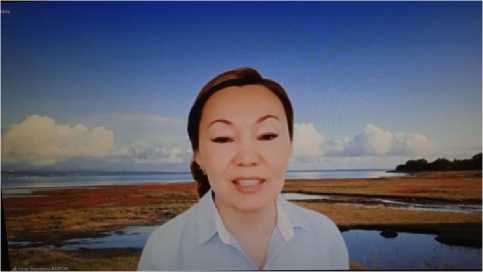
Fig. 14. Speech at the round table by N.G. Veysalova, Vice-President of the “Association of Indigenous Peoples of the North, Siberia and the Far East of the Russian Federation”.
E.V. Polikarpova deals with the issues of reflecting the linguistic picture of the Nenets world and the style of the original texts in Russian translations of Nenets tales. At the interregional conference “Civilization — North: languages and cultures of indigenous peoples of the North”, held in Salekhard, Yamalo-Nenets Autonomous Okrug from October 31 to November 2, 2022, E.V. Polikarpova presented in her scientific report “Nenets folk tale in comparison and contrast with Russian” the main features of the text of Nenets tales, immersing herself in the originality of the representation of the natural world and the characters of the Nenets people in the fairy tale genre. Speech by E.V. Polikarpova aroused genuine interest among the conference participants, for whom the Nenets fairy tale appeared not just as a literary genre, but as a set of linguistic and cultural observations from the outside, revealing the connection between the fabulous, illogical, and unreal with the completely logical, down-to-earth characteristics of the Nenets ethnic group. E.V. Polikarpova’s translation studies traces the close connection of the Nenets with nature: nature is harsh, the heroes of fairy tales have to wander long distances, defeating evil monsters and cannibals. It is shown that such phenomena as intrigue, envy, betrayal are found in Nenets tales, but they are opposed by perseverance, fearlessness, and readiness to sacrifice in the name of others. The Nenets fairy tale as a genre of folklore and as a narrative type of folk art, along with the tough struggle for existence, reflects the best character traits of the Nenets people: friendliness, loyalty, kindness, hospitality, the strength of maternal love, denial of betrayal. Nenets folklore appears in fairy tales not only as a monument of oral folk art, but also as a reflection of important information about the spiritual and material culture of the Nenets, the social structure of life and the way of life of the Nenets people. Nenets fairy tales trace both collectivism and individualism, class stratification, and touch upon issues of property and protection of the rights of the Nenets. Based on research into the genre of the Nenets fairy tale, teachers and students of the Department of Translation and Applied Linguistics of NArFU continue to explore ideas about the world order that are important for the Nenets and are directly related to nature. In 2023, several final bachelor’s theses on the study of concepts of Nenets culture, important for understanding the Nenets ethnos, were defended. For example, this year, under the guidance of E.V. Polikarpova, Y.M. Valkov successfully defended his graduate work “Transfer of means of representation of the concept “Reindeer” when translating English texts about Nenets into Russian”.
Knowledge of the features of representatives of the Nenets ethnic group was useful to Associate Professor E.V. Polikarpova during a regional seminar of cultural workers jointly with the State Budgetary Institution “Ethno-cultural Center of the Nenets Autonomous Okrug”. She acted as a referent on issues of business etiquette in Naryan-Mar on March 21–27, 2023. According to the organizers — representatives of the Department of Education, Culture and Sports of the Nenets Autonomous Okrug, the “Ethnocultural Center of the Nenets Autonomous Okrug” — E.V. Polikarpova immersed listeners from among cultural workers in the problems of conflictology, presented the basic requirements of business etiquette with a focus on the northern region, showed examples of self-development using examples of specific names of famous northerners from among the Nenets, taught in a number of master classes how to restore one’s strength by drawing energy, as it is customary among the Nenets, among nature, and conducted several psychological trainings, demonstrating clearly how one can successfully represent one’s interests.
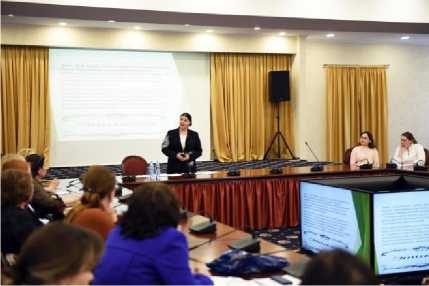
Fig. 15. Speech by E.V. Polikarpova, Candidate of philological sciences, Associate Professor, at the regional seminar of cultural workers, Naryan-Mar, March 21–27, 2023.
Participation in the round table meeting “Preservation and development of the Nenets language in the Nenets Autonomous Okrug”
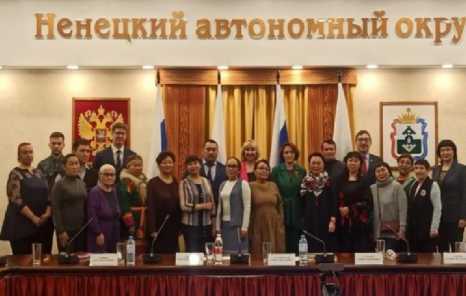
Fig. 16. Participants of the round table in Naryan-Mar.
At the round table meeting “Preservation and development of the Nenets language in the Nenets Autonomous Okrug” in Naryan-Mar on December 5, 2022, a group of NArFU scientists from among the participants of the project “Preserve the Nenets Language and Culture Together” presented the main results of monitoring studies in their speech, held in September-October 2022 and made specific proposals for developing round table recommendations:
-
• consider the issue of the possibility of improving Articles 11 and 14 in the Federal Law “On education in the Russian Federation” in the State Duma of the Russian Federation;
-
• take part in the development of materials and holding of the II Federal Olympiad for schoolchildren in philology and literature (in Nenets language and literature) at the site of the NArFU branch in Naryan-Mar and at the regional site in Salekhard;
-
• popularize the study of the Nenets language and culture of the Nenets people by holding significant cultural, educational and scientific-educational events: create a special section on the Nenets language and culture of the Nenets people at the online exhibition “Virtualika” of NArFU within the framework of the project “Scientific interaction of federal universities in applied linguistics and professional pedagogy in the context of digitalization”; organize an exhibition of paintings by the famous Nenets poet, prose writer, artist, public figure P.A. Yavtysyy in NArFU in 2023
-
• develop an electronic dictionary of concepts of Nenets culture (2024–2026);
-
• continue the practice of conducting ethno-cultural and scientific research expeditions in order to preserve the Nenets language and culture of the Nenets people;
-
• carry out further monitoring research to study the state of the Nenets language and preserve the culture of the Nenets people, present the results to the general public in various forms of presentations and publications;
-
• implement a professional retraining program “Teaching the Nenets language and the culture of the Nenets people in the context of digitalization” at NArFU in the 2023–2024 academic year;
-
• continue posting information about the project “Preserve the Nenets Language and Culture Together” on the electronic platform of the Arctic multilingual portal as part of the international project “Digitalization of the linguistic and cultural heritage of the indigenous peoples of the Arctic”;
-
• improve linguodidactic, educational, methodological and logistical support for kindergartens, schools, educational and cultural centers by introducing the methodology of language nests, gaming, communicative and sociocultural techniques;
-
• offer to teach the Nenets language according to the methods of teaching foreign languages;
-
• improve the publication of educational and didactic materials, children’s literature, printed products, handouts, posters, and song collections in the Nenets language;
-
• provide kindergartens, schools, educational and cultural centers with natural materials for group work, models of tents and their interior furnishings, game models of animals and birds of the Arctic.
-
• create and actively use videos, animated films, computer games and visualized fairy-tale stories in the Nenets language in teaching;
-
• recommend developing and staging theatrical plays and artistic sketches in the Nenets language in schools and kindergartens, as well as at cultural events;
-
• motivate children, youth and adults to study the Nenets language and culture of the Nenets people through special radio broadcasts and video channels, electronic and print media in the Nenets language at the regional and all-Russian levels.
Legal and regulatory framework of the project
At the moment, there are three fundamental official documents that help to organize activities within the framework of the presented project:
-
• Agreement on cooperation between NArFU and the Ethno-cultural Center of the Nenets Autonomous Okrug (November 25, 2021);
-
• Order of NArFU No. 1138 on approval of the Roadmap of the All-Russian scientific and educational project “Preserve the Nenets Language and Culture Together” (December 30, 2022);
-
• Agreement on cooperation between NArFU and the Nenets Regional Center for Educational Development (June 27, 2023).
The Ethno-cultural center of the Nenets Autonomous Okrug and the Northern (Arctic) Federal University signed a cooperation agreement on November 25, 2021, which envisages mutual scientific, methodological and information support, joint fundamental and applied research, exchange of analytical data, development and implementation of educational programs, holding conferences, seminars, round tables and other events, as well as many other areas of joint activities. The interaction of these two institutions contributes to the development of both the presented scientific and educational project and many others.
The project Roadmap included the most significant activities to achieve the goal and solve complex problems of preserving the Nenets language and culture of the Nenets people. The project events include:
-
• conducting monitoring studies on the state of the Nenets language and its teaching in the Nenets Autonomous Okrug and the Yamalo-Nenets Autonomous Okrug;
-
• holding the All-Russian round table “Translation activities using the languages of the peoples of Russia. Nenets language” together with the Ethno-cultural Center of the Nenets Autonomous Okrug and the Union of Translators of Russia;
-
• preparation of uniform requirements for the tasks of the preparatory and final stages of the Federal Olympiad for schoolchildren in the native languages and literature of the peoples of the Russian Federation and tasks in the Nenets language and literature of the Nenets people as part of the methodological commission of the Olympiad in the Nenets language;
-
• inclusion of the Nenets language as a translation language in the competition task within the framework of the international written translation competition “Digital Arctic
transfer”, annually held by the Northern (Arctic) Federal University named after M.V. Lomonosov, conducting an expert assessment of submitted written translations using the Nenets language;
-
• preparation and implementation of a student project to translate Frederick J. Jackson’s book “The Great Frozen Land” about a trip to the Nenets tundra (commissioned by the State Budgetary Institution “Museum Association of the Nenets Autonomous Okrug”, Naryan-Mar);
-
• preparation and holding of an exhibition of paintings by the Nenets artist, poet, prose writer, public figure Prokopiy Andreevich Yavtysyy (from the artist’s family fund) with philological and cultural support for the event;
-
• preparation and implementation of a professional retraining program “Teaching the Nenets language and culture of the Nenets people in the context of digitalization” at the Center of the Integrative Translation Studies of the Subarctic Space and some others.
NArFU and the Nenets Regional Center for Educational Development have been linked by mutually beneficial cooperation for many years. Active interaction between NArFU and the center began within the framework of the All-Russian scientific and educational project “Preserve the Nenets Language and Culture Together”. In the 2023–2024 academic year, the Professional Retraining Program “Teaching the Nenets language and Nenets culture in the context of digitalization” is being prepared for implementation in cooperation with the Nenets Regional Center for Educational Development. At the site of the NArFU branch in the Nenets Autonomous Okrug, in close cooperation with the Nenets Regional Center for Educational Development, as well as with the Center for Working with Talented Youth (Salekhard) and the Regional Institute for Educational Development of the Yamal-Nenets Autonomous Okrug, colleagues from the Institute of the Peoples of the North of the Russian State Pedagogical University named after A. I. Herzen and representatives of the Department of Translation and Applied Linguistics of NArFU conducted the qualifying and final stages of the II Federal Olympiad in the native languages and literature of the peoples of Russia (Nenets language). As part of the cooperation, talented children and youth are supported; children, their parents, and specialists in the field of education and culture are invited to participate in competitions, olympiads, and other events. Development, implementation and examination of basic and additional educational programs, interaction on issues of ethno-cultural education using the languages of the peoples of the Arctic Zone of the Russian Federation is an integral part of the Agreement signed by NArFU and the Center on June 27, 2023.
It should be noted that the agreements signed between NArFU and the Ethno-cultural Center of the Nenets Autonomous Okrug and the Nenets Regional Development Center are supported by roadmaps approved by the Academic Council of NArFU, that is, they receive official status, thus making the project participants responsible for the implementation of the activities set out in the relevant documents.
The 2nd Federal Olympiad for schoolchildren in native languages and literature of the peoples of Russia
In 2022–2023, the qualifying and final stages of the Nenets language Olympiad in Native languages and literature of the peoples of Russia were held at the NArFU website. The director and deputy director of the NArFU branch in Naryan-Mar, colleagues from the Nenets Regional Center for Educational Development, employees of the Center for Work with Talented Youth (Salekhard) and the Regional Institute for Educational Development of the Yamal-Nenets Autonomous Okrug, colleagues from the Institute of Peoples of the North, Russian State Pedagogical University named after A.I. Herzen (St. Petersburg), teachers of the Department of Translation and Applied Linguistics of Northern Federal University, colleagues from the Siberian Federal University took part in the preparation and holding of the Olympics. 124 schoolchildren from the Nenets and Yamalo-Nenets Autonomous okrugs took part in the qualifying round. 42 students reached the final stage; 3 ninth-grade students became winners of the Nenets language Olympiad.
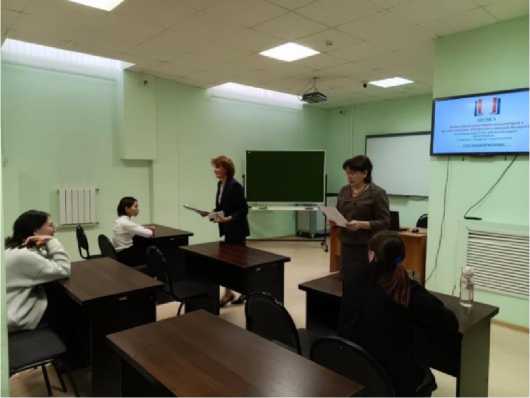
Fig. 17. Participants and organizers of the 2023 Olympiad 10
Exhibition of works by P.A. Yavtysyy
In April 2023, the Northern (Arctic) Federal University named after M.V. Lomonosov hosted a personal exhibition of paintings “Salyad” (Return), dedicated to the 90th anniversary of the birth of the outstanding Nenets artist, poet and public figure Prokopiy Andreevich Yavtysyy. The opening was accompanied by a two-day lecture, which could be attended not only by students and staff of NArFU, but also by all interested Arkhangelsk residents. His daughter Larisa Prokopyevna Latysheva told about Prokopiy Andreevich Yavtysyy. She heads the department of ethnography and regional art history of the State Budgetary Institution “Museum Association of the Nenets Autonomous Okrug” in Naryan-Mar and is a graduate student at Northern Federal University. Procopiy Yavtysyy believed that literary creativity should be combined with artistic creativity, and only then will it be clear what is inside another person. His daughter demonstrated this by reading the story “Penzer” (Tambourine). L.P. Latysheva invited listeners to interpret and unravel the meanings em-
-
10 Source: photo of the Olympiad organizers.
bedded in the paintings of P.A. Yavtysyy, reflecting the mythological world of the Nenets. Dancing also helped the guests of the lecture hall to immerse themselves in the work of Procopiy Yavtysyy. The dance “Penzer” (Tambourine) was performed by the soloist of the ensemble “Zindegi”, Associate professor of the Department of Translation and Applied Linguistics Elena Polikarpova. The opening of the exhibition of paintings, which took place after the lecture, also started with the Nenets dance “Masters” performed by the Zindegi ensemble. The exhibition featured artistic works by Procopiy Yavtysyy, who was one of the first to depict scenes of Nenets mythology on paper. The red ribbon to mark the opening of the exhibition was solemnly cut by NArFU Vice-Rector for Information Policy, International and Interregional Cooperation Konstantin Zaikov, Larisa Latysheva, as well as the Chairman of the Board of the Arkhangelsk regional public organization “Community of the Nenets Tosavey District” Ivan Ivkin. Full information about the event is presented on the NArFU website 11 .
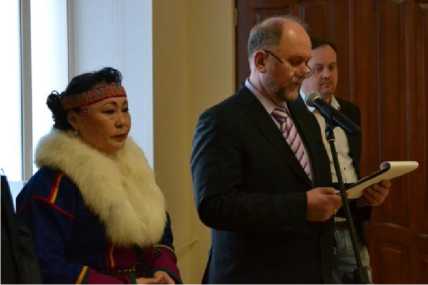
Fig. 18. Opening of the exhibition 12.
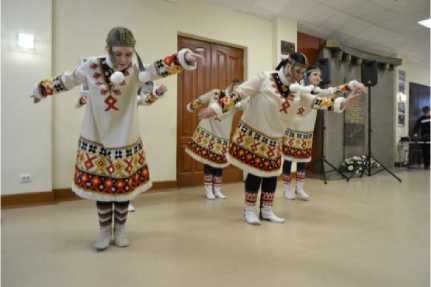
Fig. 19. Nenets dance “Masters” performed by the ensemble “Zindegi” 13.
Professional retraining program “Teaching the Nenets language and Nenets culture in the context of digitalization”
The above-mentioned professional retraining program for Nenets language teachers and cultural specialists is aimed at developing the professional competencies necessary for teaching, preserving and developing the Nenets language and culture of the Nenets people. The main tasks include carrying out professional activities in accordance with regulations in the field of education, requirements for maintaining educational documentation in an educational institution and standards of professional ethics; implementation of effective interaction with all subjects of the educational process; mastering modern methods of teaching the Nenets language and literature; mastery of a wide range of digital tools for effective work in the digital educational environment; development of general pedagogical and subject-pedagogical ICT competencies; development and
REVIEWS AND REPORTS
Alexander M. Polikarpov, Maria V. Druzhinina, Elena V. Polikarpova … implementation of individual projects with the aim of preserving and developing the Nenets language and culture of the Nenets people. The program includes five main modules that allow developing the competencies necessary for teaching the Nenets language, literature, and culture using digital technologies. Linguistic, ethno-cultural, literary, methodological and applied topics of the classes are focused on expanding the range of thinking in the field of ethno-education using digital tools. The project module is focused on the implementation of creative projects that are in demand and ready for implementation in the Nenets and Yamalo-Nenets Autonomous Okrug. In the process of working on projects, students will be able to implement the acquired interdisciplinary knowledge and will be able to actively participate in the implementation of the scientific and educational project “Preserve the Nenets Language and Culture Together”. The project will be implemented in the 2023–2024 academic year.
Conclusion
The main components of the strategy for the preservation of the language and culture of the Nenets people, prospects of the project development
The scientific and educational project “Preserve the Nenets Language and Culture Together” is interdisciplinary in nature. The subject field of the collective of participants is very large and continues to expand due to new stakeholders from various organizations at the regional, federal and international levels. The geographical scope of the project also acquired an all-Russian and international character. Phenomena such as the transfer of knowledge from different fields of science, multiplier effects in the form of the generation of new ideas and their implementation, the emergence of mini-projects within the framework of the main one, allow us to state a high level of political, social, socio-economic, scientific, educational and socio-cultural resonance of the project in Russia and abroad. The project makes a significant contribution to the preservation of the Nenets language and culture of the Nenets people, which is part of the political strategy of the country and regions. The presented article demonstrates the main opportunities and prospects for further development of the project in the form of scientific events, educational courses, educational work, exchange of experience, presentations of information content, examination of educational and methodological literature, and the creation of new scientific products. The project plays a socially significant role for the indigenous peoples of Russia, is designed to make a worthy contribution to the spiritual values of speakers of minority languages, and therefore has potential for further implementation.
Список литературы All-Russian Scientific and Educational Project “Preserve the Nenets Language and Culture Together”: Experience of Interaction and Prospects for Implementation
- Burkova S.I. Sopostavitel'noe opisanie funktsional'no semanticheskikh poley obuslovlennosti v le-snom i tundrovom dialektakh nenetskogo yazyka: monografiya [A Comparative Description of the Functional Semantic Fields of Conditionality in the Forest and Tundra Dialects of the Nenets Lan-guage]. Novosibirsk, Novosibirsk State University Publ., 2003, 259 p. (In Russ.)
- Lehtisalo T. Juraksamojedische Volksdichtung, gesammelt und herausgegeben von T. Lehtisalo. Hel-sinki, Suomalais ugrilainen seura, 1947, 615 p.
- Lyublinskaya M.D., Pushkareva M.V. Sozdanie novoy terminologii na tundrovom nenetskom yazyke [Vocabulary Development in Tundra Nenets]. Rodnoy yazyk [Mother Tongue], 2019, no. 2, pp. 5 32.
- Koshkareva N.B. Dialektologicheskiy atlas ural'skikh yazykov, rasprostranennykh na territorii Yamalo Nenetskogo avtonomnogo okruga: monografiya [Dialectological Atlas of the Uralic Languages Com-mon in the Territory of the Yamal Nenets Autonomous District]. Kaliningrad, ROST DOAFK Publ., 2017, 256 p. (In Russ.)
- Serotetto G.P. Foneticheskie osobennosti gydanskogo govora nenetskogo yazyka [Phonetic Features of the Gydan Dialect of the Nenets Language]. Voprosy uralistiki 2014. Nauchnyy al'manakh [Ques-tions of Uralistics 2014. Scientific Almanac]. Saint Petersburg, Nestor Istoriya Publ., 2014, pp. 498 501.
- Laptander R.I. Terminologiya snega i l'da v nenetskom yazyke [Nenets Snow and Ice Terminology]. Voprosy uralistiki 2014. Nauchnyy al'manakh [Questions of Uralistics 2014. Scientific Almanac]. Saint Petersburg, Nestor Istoriya Publ., 2014, pp. 423 428.
- Koshkareva N.B. O leksikograficheskom opisanii dialektov nenetskogo yazyka [On the Lexicographic Description of the Dialects of the Nenets Language]. In: Materialy 2 y mezhdunarodnoy konferentsii po samodistike posvyashchaetsya 100 letiyu so dnya rozhdeniya Natalyi Mitrofanovny Teresh-chenko [Proc. 2nd Intern. Conf. on the Samoyed Languages Studies (Dedicated to the Natalya Mitro-fanovna Tereshchenko’s 100th Anniversary of the Birth)]. Saint Petersburg, Nestor Istoriya Publ., 2008, pp. 131 136. (In Russ.)
- Koshkareva N.B. Ocherki po sintaksisu lesnogo dialekta nenetskogo yazyka: monografiya [Essays on the Syntax of the Forest Dialect of the Nenets Language]. Novosibirsk, Lyubava Publ., 2005, 334 p. (In Russ.)
- Amelina M.K. Aktsentnye kharakteristiki neproizvodnykh imen v tundrovom narechii nenetskogo yazyka [The Accent Characteristics of the Underived Nouns in Tundra and Forest Nenets Dialects]. Uralo altayskie issledovaniya [Ural Altaic Studies], 2011, no. 2 (5), pp. 7 38.

